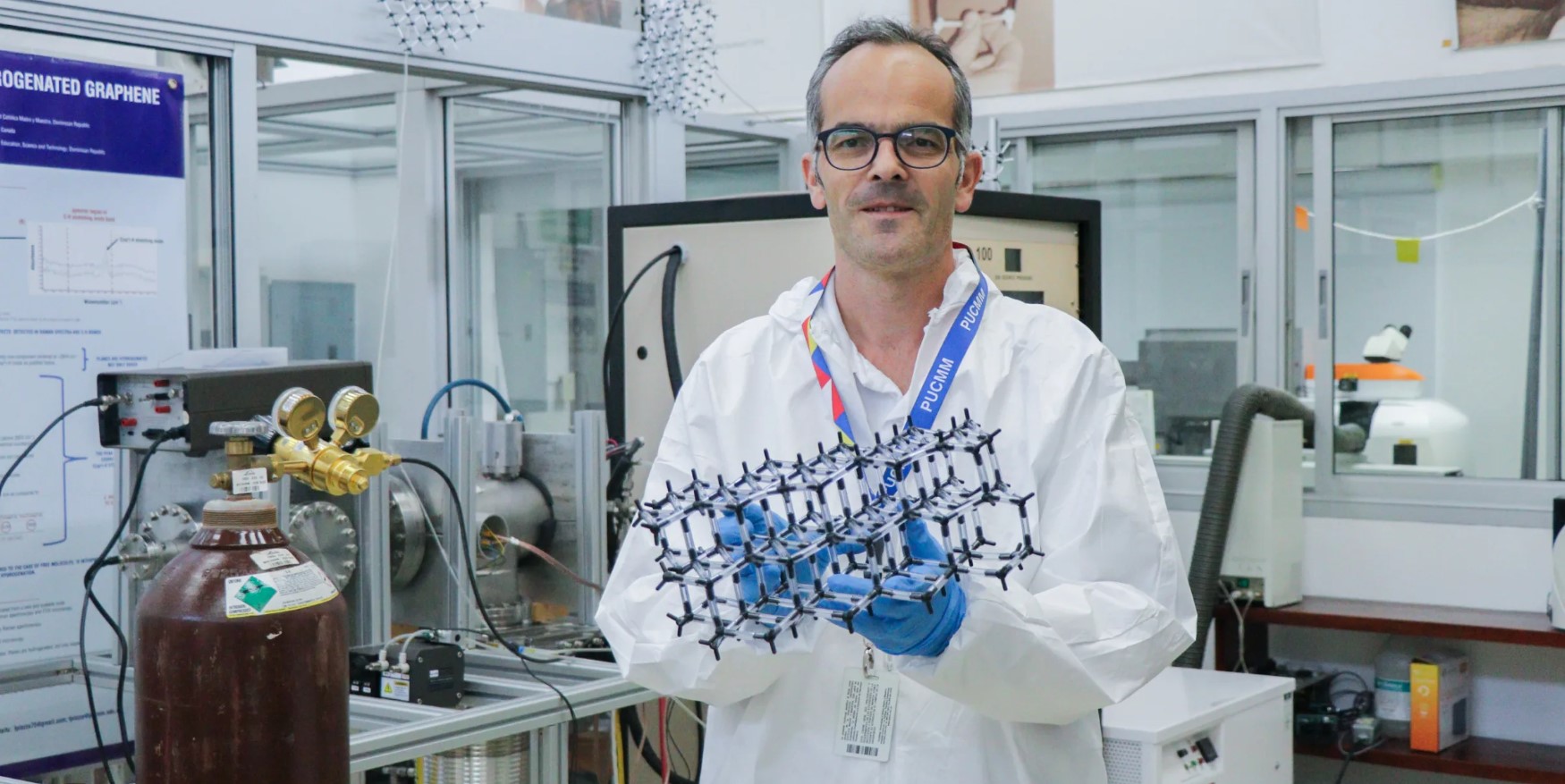Microchip market: PUCMM’s revolutionary material development

Santo Domingo.- The Pontifical Catholic University of Madre y Maestra (PUCMM) revealed on Thursday that its researchers have successfully developed a groundbreaking material known as 2D diamond, a carbon nanomaterial with unparalleled properties. This innovation holds immense potential for enhancing the efficiency of microchips, which are in high demand globally and are integral components of electronic devices ranging from smartphones and computers to vehicles and medical equipment.
In a press release, physicist and PUCMM researcher Fabrice Piazza likened microchips to “tiny brains” with neurons represented by transistors. He emphasized the industry’s ongoing efforts to enhance the speed and power of these microchips continuously.
The 2D diamond created in PUCMM laboratories presents promising physical and chemical characteristics that could address a significant challenge confronting the industry. Specifically, it aims to overcome the constraints posed by the reduction in transistor size without compromising the ability of metallic interconnections, such as copper wires, to facilitate rapid energy transfer.
The challenge, known as RC (resistance-capacitance), pertains to the electrical resistance and capacitance of materials. As transistors and interconnects shrink in size, the resistance of interconnections increases, impeding electron flow between transistors and consequently slowing down microchip performance.
PUCMM’s research focuses on utilizing 2D diamond as a diffusion barrier to copper, potentially replacing current tantalum and tantalum nitride layers. This innovation could create more space for copper wires, significantly reducing resistance and thereby boosting microchip speed.
Since 2014, PUCMM has been exploring the properties of 2D diamond, attracting interest from various entities, including the United States Navy and Air Force. These organizations have agreed to co-finance PUCMM’s research project to investigate the interface between copper and a 2D diamond bilayer, aiming to enhance heat transfer in electronic devices and high-power density components.
Piazza, the lead researcher behind the 2D diamond, expressed optimism about the impact of this breakthrough, highlighting the Dominican Republic’s potential to contribute significantly to science and technology. He emphasized the importance of investing in science and technology transfer.
The Dominican Republic’s emergence as an investment destination for the global semiconductor industry underscores its growing significance in technological innovation. PUCMM has already patented the 2D diamond in multiple countries, including the Dominican Republic, Taiwan, the European Union, Japan, and China, with pending approval in the United States and South Korea.


















A large microchip industry in the RD would be a windfall to diversify its economy. The country is in a great logistic location for production and distribution of the product to all the Americas and Europe.
Completely agree. This would be a game-changer for the country on many levels.